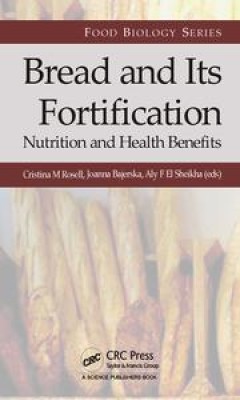Filter by

Watermeal Powder (Wolffia spp.) as a Potential Ingredient for Enhancing the P…
In certain countries, 10% of the population suffers from non-coeliac gluten sensitivity (NCGS). Additionally, some individuals are affected by gluten ataxia and dermatitis herpetiformis that require lifelong gluten-free diets. However, gluten-free diets often have low fiber content. Bread is known for its flavor and nutritional value, but gluten-free bread typically suffers in texture and qu…
- Edition
- -
- ISBN/ISSN
- -
- Collation
- -
- Series Title
- -
- Call Number
- FT 24-031

Comparing Physicochemical Properties Of White Bread Produced Using Natural Ye…
The choice of yeast, whether it's grape yeast or commercial yeast, depends on the baker's objectives and preferences. Grape yeast is ideal for experimental bakers seeking unique flavors, while commercial yeast offers reliability and consistency. In a recent study, the physicochemical properties (water activity, texture, and moisture content) of white bread made from grape yeast and commercia…
- Edition
- -
- ISBN/ISSN
- -
- Collation
- -
- Series Title
- -
- Call Number
- FT 24-038

The Effects of Baking Parameters on Sensory Properties of White bread Made wi…
White and sweet bread consumption in Indonesia grew to 3.01 kg/capita/year in 2020. This surge is due to bread's ease of preparation and consumption. Bread is a food product composed of wheat flour, water, sugar, salt, butter, and yeast. Yeast that is used to make bread is frequently dry yeast or instant yeast. Saccharomyces cerevisiae is the primary yeast in bread making. Natural yeast, de…
- Edition
- -
- ISBN/ISSN
- -
- Collation
- -
- Series Title
- -
- Call Number
- FT 24-043

The Effect Of Baking Parameters On Physicochemical properties Of White Bread …
Bread is widely favoured food due to simple composition and convenient suitability for daily consumption. One of the main ingredients used to determine the bread quality is yeast. As the Indonesian bread industry has grown, bread is being processed by replacing instant yeast with natural yeast because of increasing consumer interest natural products. Natural yeast is obtained from fermented…
- Edition
- -
- ISBN/ISSN
- -
- Collation
- -
- Series Title
- -
- Call Number
- FT 24-034

The Biodegradation of Black Soldier Fly (Hermetia illucens) on Tofu Dregs and…
If left untreated, biowaste is one of the contributors to environmental problems and greenhouse gas production. Treatment options such as bioconversion using insects may have beneficial and affordable outcomes for managing biowaste. Decomposing insect, such as the black soldier fly (BSF), whose larvae are capable of converting food waste into high-value biomass. Which then could be an a…
- Edition
- -
- ISBN/ISSN
- -
- Collation
- -
- Series Title
- -
- Call Number
- BT 22-042

Bread and its fortification : nutrition and health benefits
- Edition
- -
- ISBN/ISSN
- 9781032179636
- Collation
- x, 407 p. : ill. ; ind. ; 24 cm.
- Series Title
- -
- Call Number
- 641.815 Bre
- Edition
- -
- ISBN/ISSN
- 9781032179636
- Collation
- x, 407 p. : ill. ; ind. ; 24 cm.
- Series Title
- -
- Call Number
- 641.815 Bre
 Computer Science, Information & General Works
Computer Science, Information & General Works  Philosophy & Psychology
Philosophy & Psychology  Religion
Religion  Social Sciences
Social Sciences  Language
Language  Pure Science
Pure Science  Applied Sciences
Applied Sciences  Art & Recreation
Art & Recreation  Literature
Literature  History & Geography
History & Geography